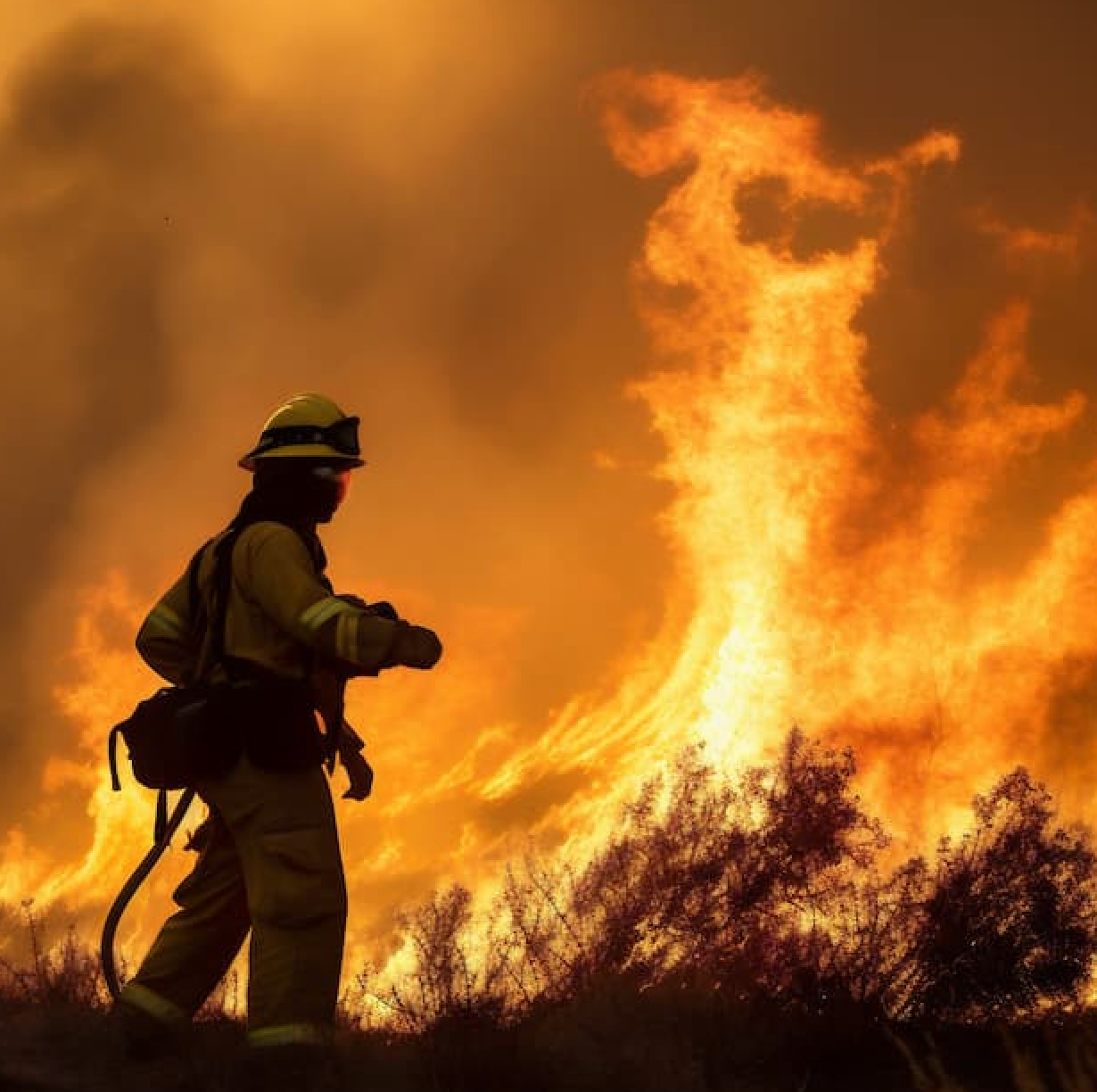Firefighters Face Lasting Respiratory Damage from Wildfire Exposure
Research shows that wildfire smoke significantly reduces lung function in emergency responders, with both short- and long-term health effects.
By
Lana Pine
| Published on January 17, 2025
5 min read
Credit: Adobe Stock/Girts

Evidence confirms that wildfire smoke exposure has both immediate and potential long-term effects on respiratory health, including reduced lung function, respiratory symptoms and increased asthma cases.
Although previous research has proven structural firefighters — those who work to extinguish fires in buildings and factories — are impacted by pulmonary, cardiovascular, mental and neurological health complications, investigators say the health risks linked to fighting wildfires may not be the same. This is due to a variety of factors, including working longer shifts involving prolonged heavy work in areas of dense smoke over a period of days to weeks. These firefighters may also face restrictions on the use of respiratory protective equipment (RPE). Other emergency responders, such as police, paramedics, ambulance officers and seasonal workers, are similarly at an increased risk.
“There are a range of studies which have explored the health impacts of wildfire on the general population, particularly the acute respiratory and cardiovascular effects,” wrote a team of investigators from Monash University in Melbourne, Australia. “In contrast, the health impacts amongst those deployed extinguishing wildfires are less well-studied.”
Investigators conducted a systematic review using Medline, Embase and Scopus databases to identify studies that examined the relationship between wildfire exposure and respiratory health among emergency personnel or firefighters who had responded to wildfires.
Out of 26 studies, 24 provided evidence of the negative respiratory effects in firefighters and emergency responders. The self-reported exposure duration ranged from 3.6 hours to several days, up to 28 days. The time between exposure and measurement and symptom collection ranged from “immediately after” (for acute outcomes including lung function) to 3 to 9 months postfire or postseason.
Negative effects included reduced lung function, airway inflammation, respiratory tract symptoms and increased asthma cases related to wildfires or prescribed burns exposure. Many studies used personal or community-level monitoring to measure air pollution exposure, including particulate matter (PM) in the air (PM2.5, PM10), carbon monoxide (CO) and overall air quality. They found higher exposure to PM2.5 was strongly linked to a decline in lung function, specifically in measures like how much air a person can exhale (forced expiratory volume in the first second [FEV1]), total lung capacity (forced vital capacity [FVC]), and how well the lungs transfer oxygen into the blood (diffusing capacity of lungs to CO [DLCO]).
Fourteen out of 19 studies showed significant short-term declines in lung function, and two studies found a significant effect on peripheral airway function. One study demonstrated that high levels of air pollution was linked to increases in residual volume (RV) within three months of exposure, with more obvious effects on small peripheral airway function soon after the fire. Another study revealed the short-term impact of exposure on small airway function among firefighters who did not wear RPE during their shift compared with healthy individuals.
Firefighters experienced more upper and lower airway symptoms, including coughing, throat irritation and difficulty breathing, within 24 to 48 hours after wildfire exposure compared with times when they were not on duty. Symptoms of chronic bronchitis, like persistent cough and mucus production, also increased after exposure.
Some firefighters reported respiratory issues like coughing, shortness of breath, wheezing and chest tightness even two to three years after exposure. Those with the highest exposure to fine particles and those deployed during the first week of a wildfire were the most affected. The strongest link between PM2.5 exposure and respiratory symptoms was seen right after the fire, although this connection weakened over time.
“In light of the expected increases in wildfire incidence, severity and impact, these findings underscore the need for further primary and secondary prevention strategies to mitigate the respiratory effects of wildfire exposure in wildfire fighters,” investigators concluded.

